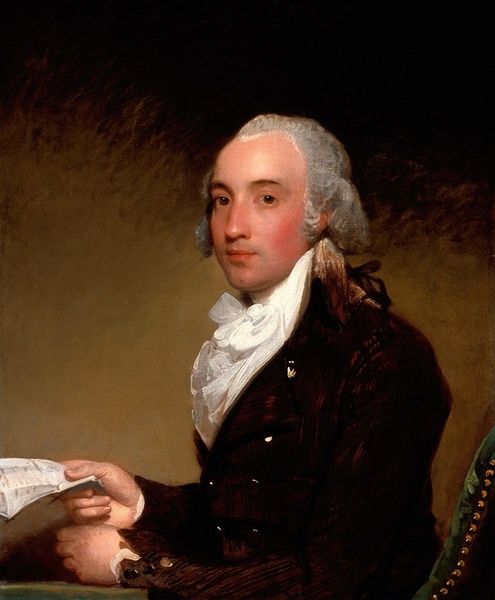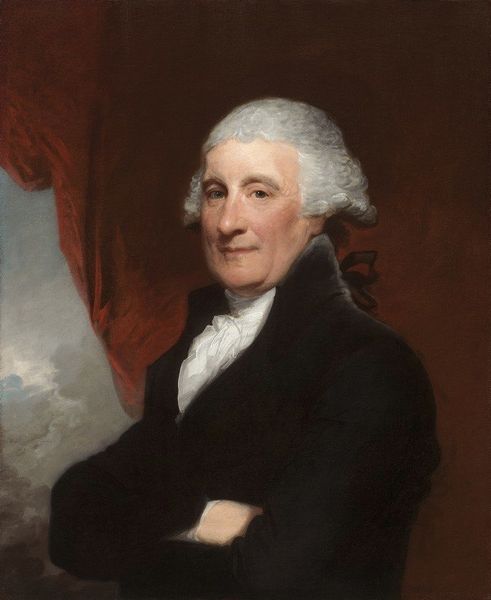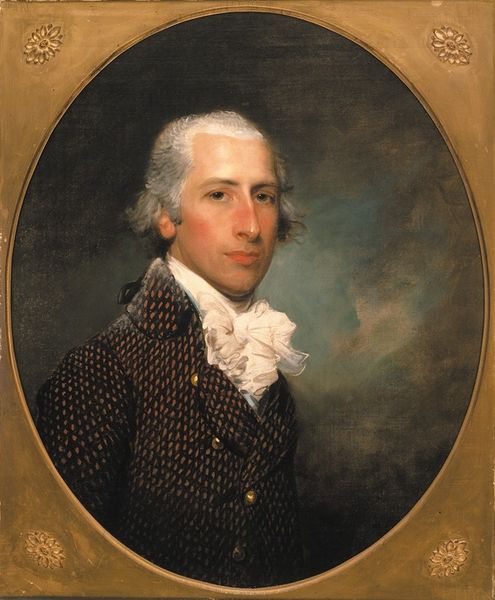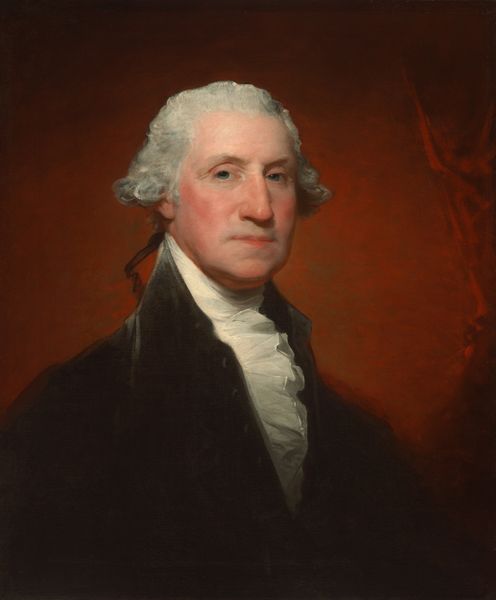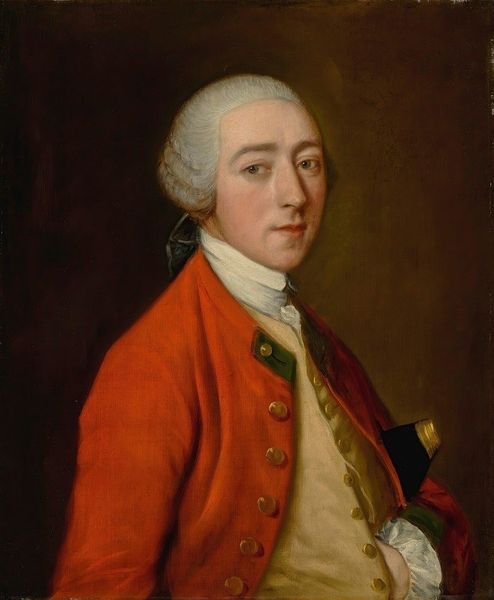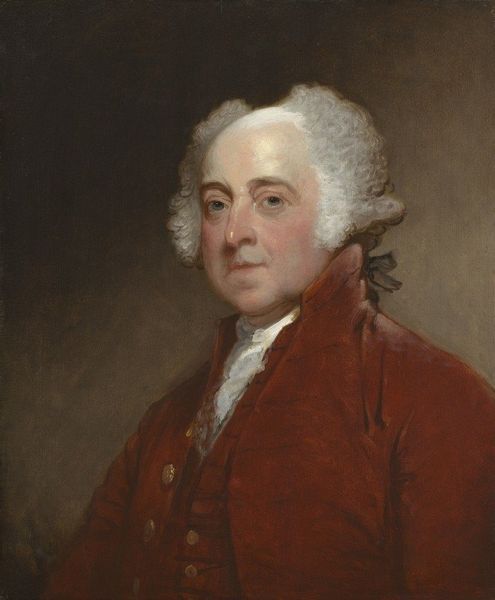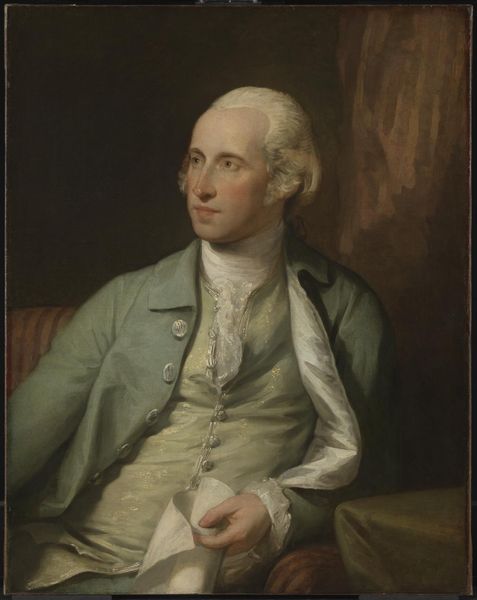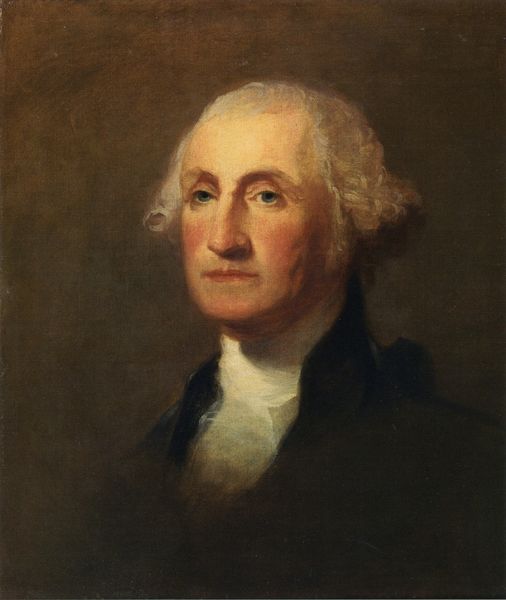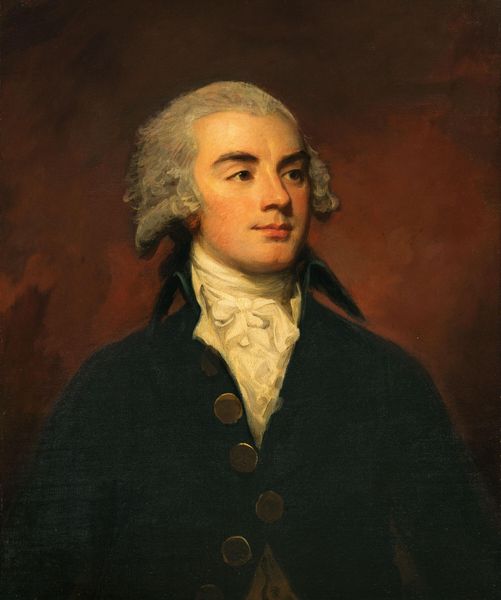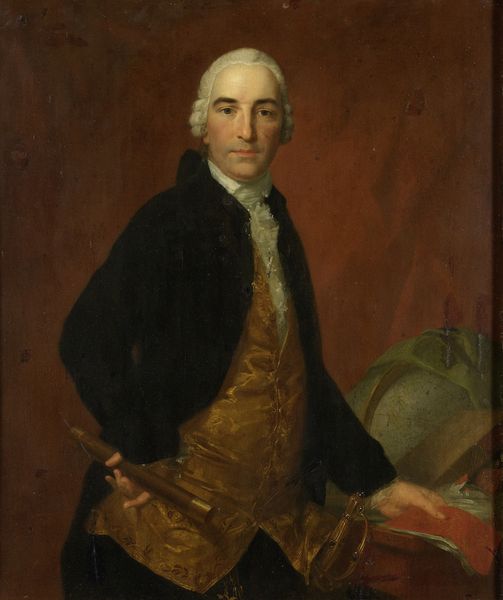
oil-paint
#
portrait
#
figurative
#
neoclacissism
#
oil-paint
#
portrait subject
#
portrait reference
#
portrait head and shoulder
#
animal drawing portrait
#
portrait drawing
#
facial portrait
#
portrait art
#
fine art portrait
#
celebrity portrait
#
digital portrait
Copyright: Public Domain: Artvee
Curator: Gilbert Stuart's oil-on-canvas portrait of Lawrence Reid Yates, dating back to around 1793-94, captures a compelling figure of the time. Editor: Immediately, I'm struck by the controlled palette, almost austere. It amplifies the intense gaze and the delicate, almost ethereal rendering of the sitter’s frilled jabot. Curator: Indeed. Look at how Stuart renders the materials. The smooth sheen of the sitter's blue coat is juxtaposed against the linen and lace. This very calculated presentation communicates status through careful visual details related to fashion, cloth, and ultimately commerce. Editor: The ruffled jabot, however, feels more symbolic than practical. It’s an emblem of refinement, echoing aristocratic aesthetics while hinting at the shifting power dynamics of the late 18th century, wouldn't you say? It frames the face, drawing your eye directly to his expression. Curator: And think about the means to achieve this degree of detail! From pigment acquisition and preparation, to canvas production, the social forces involved in Stuart’s portraits like this are so revealing about the societal values ascribed to wealth during this period. The artist has clearly put his labor on display. Editor: I am drawn to the psychological dimension. Despite the formal setting, the almost candid pose allows a sense of vulnerability. The light catching the side of his face highlights the quiet dignity, almost melancholy, reflecting the era of revolution and change that served as a backdrop to Stuart’s painting. Curator: The fact that Stuart was himself working within and across different national contexts--from the American colonies to Britain and eventually Ireland--provides a material tension embedded within this portrait that simply could not have existed without this transatlantic exchange. It enriches our understanding of Yates’ presentation. Editor: It seems the artist, in the end, has constructed an image that operates beyond surface presentation. The image serves not just as record of physical presence, but hints at the complexities of identity and the artist's careful choice of symbolism, leaving us to consider how visual memory serves to shape understanding of people, past and present. Curator: It really showcases the interweaving of individual effort, acquired goods, and historical positioning as expressed through oil on canvas, doesn’t it? Editor: Yes, precisely! It reminds us to always question not only what is shown but also why and what those visual choices say.
Comments
No comments
Be the first to comment and join the conversation on the ultimate creative platform.
